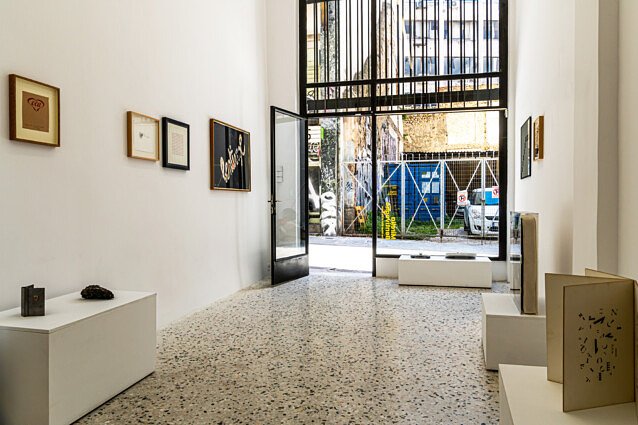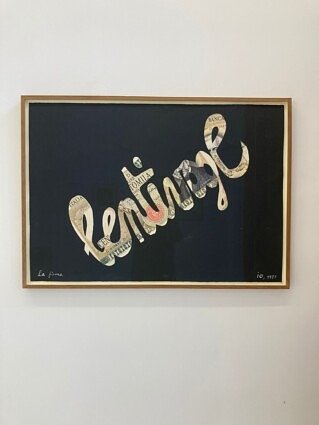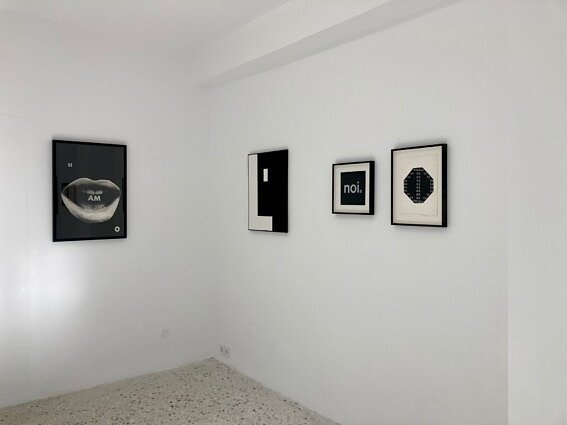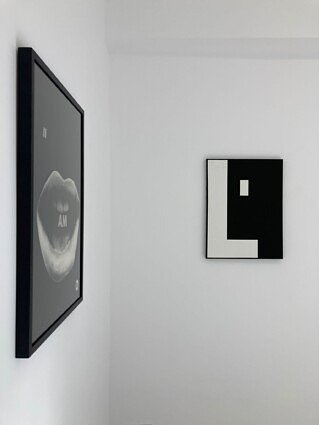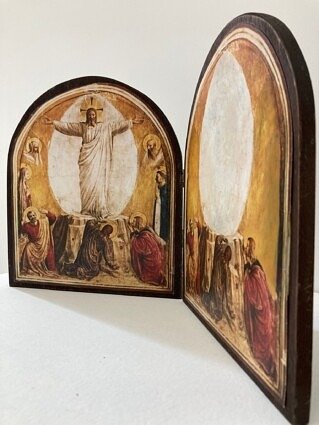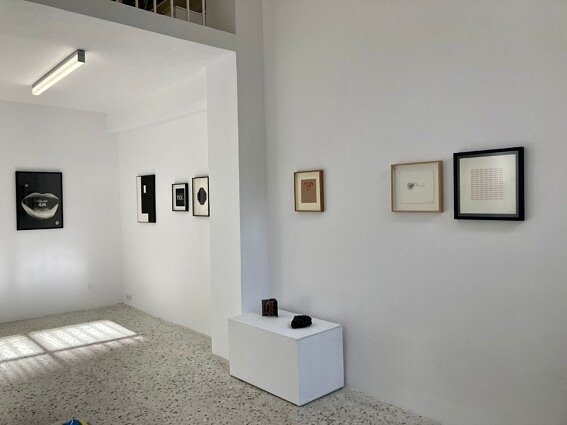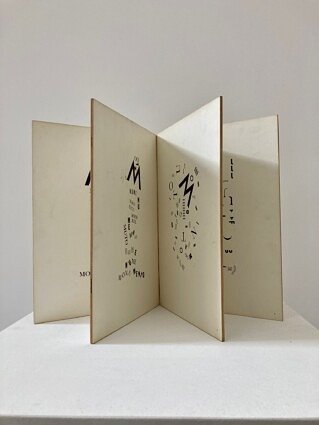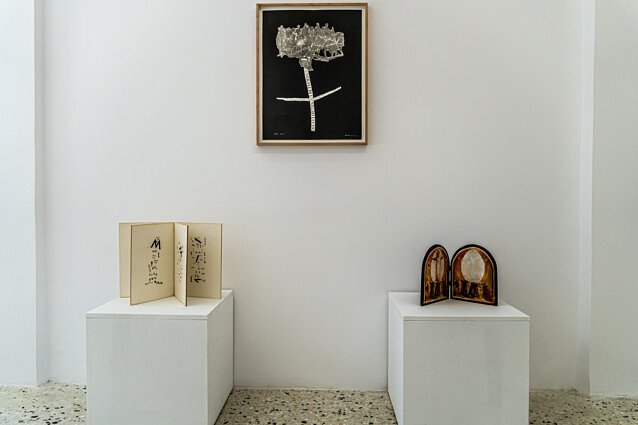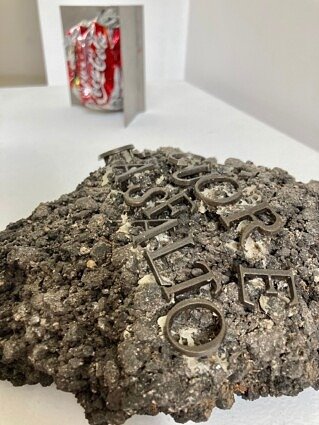Mirella Bentivoglio
The Other Side
of the Moon
Curated by Paolo Cortese and Davide Mariani
The Italian Embassy in Athens, the Italian Cultural Institute of Athens and the Gramma_Epsilon Gallery are proud to present: Mirella Bentivoglio. The Other Side of the Moon, to be inaugurated 8th March 2022, International Women’s Day.
The exhibition, created in collaboration with the Mirella Bentivoglio Archive in Rome, pays homage to this influential Italian artist in the centenary of her birth. It is the first time a retrospective dedicated to Mirella Bentivoglio (Klagenfurt 1922 – Rome 2017) has been hosted in Greece.
The Italian Ambassador in Athens, Patrizia Falcinelli, declared: “Through this exhibition, we want to give the Greek public the opportunity to get to know the extraordinary personality of Mirella Bentivoglio, an artist and multifaceted personality, who is one of only a few who have inspired the Italian and international art scene. We chose to inaugurate the exhibition on the occasion of International Women’s Day, 8th March 2022, which is of course no coincidence: our intention is to pay homage to Mirella Bentivoglio not only for the intrinsic artistic value of her work, but also for the example she has set for hundreds of artists, and for everything she has done during her long career to promote female art.”
The exhibition, curated by Paolo Cortese and Davide Mariani and first held in the museum dedicated to Maria Lai in Sardinia in 2021, highlights the depth and complexity of Bentivoglio’s poetry, and includes more than fifty works, photos, videos and drawings that not only illustrate the most significant periods of her curatorial and artistic career, but also invite reflection and dialogue on subjects that are still currently relevant.
From concrete poetry to visual poetry
Spread over two venues, the Italian Cultural Institute and the Gramma_Epsilon Gallery in Athens, the collection traces key stages in Mirella Bentivoglio’s biography and artistic journey. It starts with her experimental work in the 1960s and 1970s, when she was mainly involved in Concrete poetry, where meaning is transmitted through the shape of the composition of words and letters of the alphabet, such as ‘Story of Monument’ (Storia del monumento), created with Annalisa Alloatti in 1968, ‘Cage (I have)’ (Gabbia HO,1966-70), ‘Success’ (Successo,1969). Her Visual poetry followed, characterized by the introduction of slogans and elements of pop culture, such as her renowned ‘I love you’ (Ti amo,1970).
Many of her works in those years explore aspects of modern society, such as consumerism, which she openly and fervently criticized, as seen in ‘The consumed consumer’ (Il consumatore consumato,1974) or ‘Heart of the obedient female consumer’ (Il cuore della consumatrice ubbidiente,1975), and her witty interpretation of the coca cola logo: “I noticed that by placing the two ‘C’s opposite each other to make a heart shape – and their shape alone made this possible (I did not have to change anything), the ‘oca’ (goose) appeared of its own accord”, affirmed Bentivoglio in one of her last interviews in which she identified the ‘female-goose’ as a principal ally of consumerism.
The exhibition also documents her main environmental interventions from the mid 1970s. The most notable of these were: ‘Egg of Gubbio’ (L’Ovo di Gubbio 1976), ‘Poem to a Tree’ (Poesia all’albero,1976), ‘And=conjunction: head-on collision, immobilizing locking’ (E=congiunzione: Scontro frontale, Incastro immobilizzante,1978-81), ‘An ‘E’ of ‘E’s’, (Una “E” di “E”,1979-1981), ‘Operation Orpheus’ (Operazione Orfeo,1982) and ‘Field-book, Agri-culture’ (Libro campo, Agri-cultura,1998). The strong symbolism and identity connotations in each work carry the potential to create new and meaningful relationships with the surrounding landscape.
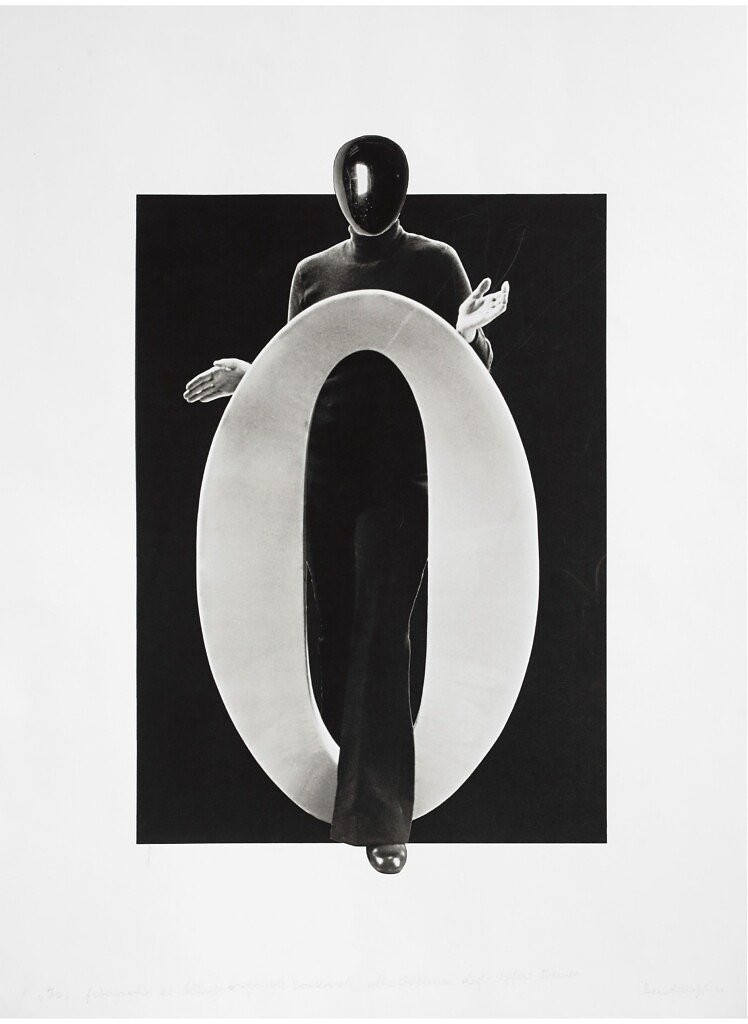
The female touch
Among the many issues explored by the artist, that of gender undoubtedly played a key role, as seen in many of her works on show, including: DIVA/NO, 1971, ‘Tombstone to the housewife’ (Lapide alla casalinga,1974) or ‘Cancelled’, (La cancellata,1977-98). In these works, Bentivoglio affirms that female emancipation is possible, but not a foregone conclusion, as she herself reminds us: “there was a habit of considering women aesthetically present only as housewives; female scientists were acknowledged, but not female artists”.
“While the popular image of a woman was someone sewing and caring for the family, a kind of angel of the hearth,” says Davide Mariani, “for Bentivoglio this concept needed to be overturned by claiming a new role in society.”
This is epitomized in the iconic writing on a T-shirt in ‘Correction, linguistic promotion of sewing’, (Correzione, promozione linguistica del cucito, 1988), which says: ‘do not/fear, I am a woman’ (niente/abbiate paura, sono una donna).
The Other Side of the Moon
The exhibition provides an insight into the creative, yet scantily explored universe of numerous other women artists. There are works, photos and material from archives that Bentivoglio herself included in national and international events to highlight common denominators in verbo-visual art by artists such as: Tomaso Binga, Irma Blank, Francesca Cataldi, Betty Danon, Chiara Diamantini, Anna Esposito, Elisabetta Gut, Christina Kubisch, Maria Lai, Sveva Lanza, Paola Levi Montalcini, Lucia Marcucci, Silvia Meija, Valeria Melandri, Gisella Meo, Anna Paci, Giovanna Sandri, Greta Schödl e Simona Weller.
According to Paolo Cortese: “Undoubtedly the most outstanding of Bentivoglio’s curatorial activity, that literally made history, particularly for women in the visual art scene, was when she gathered eighty women artists working on the expressive potential of ‘language and image’ and ‘language and object’ to exhibit in ‘Materialization of Language’ at the 1978 Venice Biennial”.
“The Other Side of the Moon exhibition owes much of its inspiration to this particular experience”, concludes Mariani, “the title is borrowed from an Eos publication of an artist’s book created by Bentivoglio in 2013. On one page she imposes the moon’s surface on the Earth and on the other is an unpublished poem from 1978. The verses describe a female-moon satellite, initially depicted as a body that obediently orbits the planet before announcing, in rebellious tones, prophetically: ‘we are happily being born’.”
There is a bilingual catalogue to accompany the exhibition, in English and Italian, edited by Postmedia Books, with critical essays by Davide Mariani, Rosanna Ruscio and biographical and bibliographical information by Rosaria Abate.
